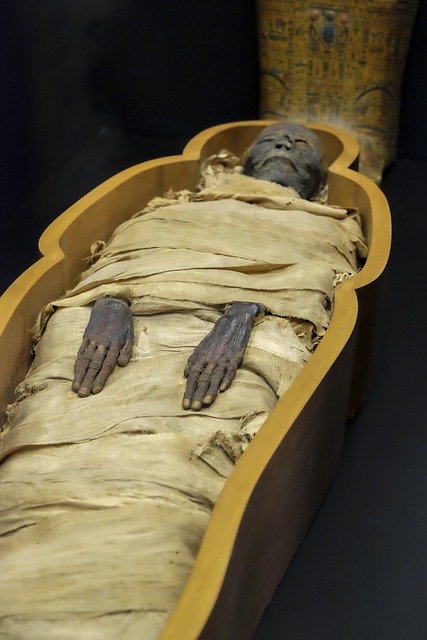Hidden Treasures: Uncommon Finds at Tour Museums
Across the globe, museums have become sanctuaries of artistic expression, cultural history, and scientific inquiry. While most visitors flock to see the most renowned exhibits and popular artifacts, many museums house lesser-known treasures that can invoke fascination, awe, or even bewilderment. These uncommon finds often hold stories that are just as compelling as their more famous counterparts. This article delves into some of the hidden gems found in various museums across the world, revealing the rich tapestry of human experience encapsulated in the lesser-seen corners of our cultural institutions.
The Allure of the Uncommon
The charm of discovering something unexpected is a part of the human experience. In every institution dedicated to preserving history, art, and science, there are artifacts, artworks, and displays that rarely receive the spotlight. These hidden treasures often provide unique insights into specific cultures, eras, and contexts that can greatly enhance an understanding of the world.
It is not just about what is visible; it is about understanding the narratives that come with those artifacts and the importance they hold. By uncovering these uncommon finds, visitors can appreciate the complexity and diversity of human creativity and ingenuity.
Unique Art Pieces
Art museums are typically packed with masterpieces by celebrated artists. Yet, nestled among the iconic works, one can find lesser-known pieces that tell intriguing stories. These artworks, while perhaps not attributed to famous names, can reflect profound cultural insights.
For example, in the Metropolitan Museum of Art in New York, you can find a small but fascinating collection of Inuit art. Crafted from materials such as whalebone and ivory, these pieces embody the spirit of the Arctic and reveal a worldview that is unique and often overlooked. The intricate carvings serve not only as decorative items but also as portals into the beliefs, traditions, and struggles of Inuit communities.
Similarly, the Galleria degli Uffizi in Florence, Italy, hosts lesser-known works by artists contemporary to the more celebrated names like Botticelli and Michelangelo. One such piece is the painting “Madonna with Child and Six Saints” by Giovanni Battista Cima. While it may not draw the same crowd as the “Birth of Venus,” its intricate detail and technique invite visitors to pause and reflect on the religious fervor of the Renaissance period.
Scientific Curiosities
Many natural history museums feature phenomenal exhibitions showcasing fossils, minerals, and taxidermy. However, they often house collections that might not garner as much attention but are no less interesting.
The Field Museum in Chicago, for instance, has a shelf-marked collection of preserved specimens in jars that go beyond the average scientific display. One can find a variety of unusual marine life, like deep-sea creatures that appear almost alien in their form. This concludes a testament to the inexplicable wonders of biodiversity and the mysteries that lie within our oceans.
Moreover, in the Smithsonian Institution, there are various artifacts from the exploration of space that seldom receive attention. One intriguing item is a piece of the actual lunar module used in Apollo 11, which, while related to a famous mission, remains overshadowed by the more prominent moon rocks. This small metallic component serves as a reminder of human ingenuity and the technological challenges conquered during our journey to the moon.
Cultural Artifacts
When visiting anthropology museums, one might be drawn toward the expansive collections dedicated to indigenous cultures. Yet, there are hidden treasures within these displays that tell poignant stories of resilience and adaptation.
At the British Museum in London, among the famed Rosetta Stone, lies a collection of artifacts from the Pacific Islands. Here, visitors can find ceremonial masks and tools used in traditional practices. Each item encapsulates a cultural narrative, reflecting deep-rooted customs and beliefs that have thrived over centuries despite colonial influences.
Equally, the National Museum of Anthropology in Mexico City showcases lesser-known treasures from the pre-Columbian era, such as humble clay pots and everyday objects that reveal much about ancient life. While grand sculptures often steal the limelight, these everyday artifacts provide a more intimate understanding of the daily lives of those who inhabited these lands long ago.
Personal Stories and Ephemera
Sometimes, the most moving finds in museums are not grand in scale or artistic value but profoundly personal. Many museums house letters, diaries, and objects that belonged to historical figures or ordinary people, offering a glimpse into their lives.
The Anne Frank House in Amsterdam stands as a poignant reminder of the horrors of war, but within its walls, one can discover the lesser-seen bits of Anne’s life—her handwritten notes and personal photographs. These items, although modest compared to monuments or artifacts, bring a relatable human touch to the experiences of people living through history.
In the Newseum in Washington, D.C., visitors can find personal belongings of journalists who risked their lives while reporting on global events. These include cameras, notebooks, and even personal letters that provide insights into the challenges faced by those in the field. The objects illuminate the sacrifices made in the name of truth and reporting, highlighting the intrinsic value of journalism in society.
Architectural Wonders
While many museums are celebrated for their exhibitions, their architecture can also serve as a hidden treasure of sorts. The buildings themselves often carry incredible stories and artistic significance that enhance the visitor experience.
The Louisiana Museum of Modern Art in Denmark, for example, is known not only for its impressive collection of contemporary works but also for its stunning location and architecture. Nestled between the sea and a park, the museum’s design creates an immersive experience that feels like an extension of the natural landscape. Visitors frequently overlook the thoughtful integration of the museum’s design with its surroundings, missing the chance to appreciate the synergy between art and nature.
Another notable example is the Guggenheim Museum in Bilbao, Spain. The building itself, designed by Frank Gehry, is often lauded as a work of art in its own right. Many visitors get so caught up in the exhibitions that they neglect to explore the fluid lines and sculptural forms of the architecture, which are as much a part of the Guggenheim experience as the vibrant collections within.
Exploring Lesser-Known Museums
While large, famous museums often overshadow smaller institutions, unique treasures abound in local and lesser-known museums, which are often maintained with love and dedication by communities. These locations can be goldmines for uncommon finds.
Consider the American Visionary Art Museum in Baltimore. This eclectic museum showcases artworks created by self-taught artists, showcasing the depths of human imagination outside of traditional artistic education. The displays include whimsical sculptures and stunning paintings made from unconventional materials, featuring narratives that speak to the resilience of the human spirit.
Moreover, the International Cryptozoology Museum in Portland, Maine, provides a quirky yet fascinating exploration of the world of creatures like Bigfoot and the Loch Ness Monster. While some may dismiss these as mere myths, the artifacts and tales within this small museum encourage visitors to ponder the boundaries of scientific belief and cultural storytelling.
Conclusion: The Joy of Discovery
As we venture into museums, we are often guided by the allure of famous pieces and the promise of monumental history. However, it is essential to look beyond the immediate and perhaps even delve into the rarities and lesser-known sections. These uncommon finds can deepen our connection to humanity, providing unique perspectives and inspiring curiosity.
The treasures hidden in museums, whether it be an unassuming artifact, an extraordinary piece of art, or deeply personal letters, remind us that every object has a story to tell—a testament to the complexity of life itself. In embracing these hidden treasures, we unlock a fuller narrative of our shared human experience.


